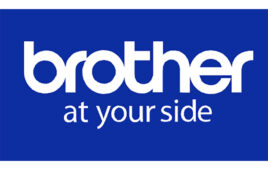Finding the right loyalty program “fit” involves a lot more than simply signing up with the first supplier partner you find. Successful c-store retailers need an up-to-date loyalty solution that fits their budgets, their POS systems and their stores.
“We’re just gas people—we don’t understand this stuff,” said Gene Tish, vice president and chief operating officer of Ashland, Ore.-based WSCO Petroleum Corp. “I didn’t know the answers, but I did know what our problems were and what I wanted a loyalty program to do, and that’s give my credit card customers an incentive for switching to using Automated Clearing House (ACH) debit payments that withdraw funds directly from their checking accounts.”
Over the years his company had done everything it could to build its check base, but pay at the pump coupled with the effective advertising credit card companies do was seriously reducing his check sales.
In addition, not requiring prepayment at self-serve stations meant a higher drive-off cost, but requiring customers to prepay amounted to pushing them to use margin-gobbling credit cards.
“I figured if I could move 15 to 20% of what I’m now getting in credit card payments to ACH payments, it would be great,” Tish said.
WSCO was looking to provide its customers with a card that could be processed like a check, would activate pumps but allow customers to come inside after pumping and pay with cash, and tie in to loyalty concepts as well. The more he studied it, Tish became convinced that the loyalty piece was crucial for getting customers to migrate from credit cards to ACH.
Checking Provider Abilities
After months of searching, the only loyalty program provider Tish found that could give him everything he wanted was Twin Falls, Idaho-based KickBack Rewards Systems. Started in 2000 by Oasis Stop ‘N Go c-store partners Pat Lewis and Dan Willie—who originally designed their loyalty system for their own stores, but soon began supplying solutions to other operators across the country.
Getting involved in a loyalty program increases spending per visit and number of visits, Lewis noted. “Two years after we started our loyalty program, our profits were up 487%” he said. “There were other factors, of course, but loyalty was huge.”
KickBack now provides complete backend loyalty solutions that include toll-free 24-hour tech support and real time reporting to more than 100 companies in 12 states and Canada.
Tish decided to activate the loyalty card before using it to roll customers over to ACH. Five months later, the program is available at about half his stores and Tish expects it will be entirely rolled out by the end of the first quarter. “We’re not all the way there yet, but we’re really glad we did it,” he said.
Loyalty Costs Vary Widely
Costs for loyalty program technology vary widely depending on the amount of customization and number of bells and whistles the buyer wants. It can be expensive—$15,000 or more in for equipment, installation fees and backend support in some instances. Nonetheless, the majority of Lewis’s programs have start-up costs less than $500 per site, so there are options for every budget.
Scott Wetzel, marketing director for loyalty program provider Excentus, said that the Reward Marketplace program his company offers costs about $3,000 per site. Its Reward Link c-store technology allows store operators to promote individual items or overall spend and reward their customers with cents-per-gallon discounts on fuel.
“The site-level technology is extremely affordable and works with existing c-store POS systems like Verifone Ruby, Wayne Nucleus and Gilbarco Passport systems,” Wetzel says, and the program has proven very effective at increasing overall c-store sales and fuel sales.”
Brent Morris, president of Gas King Oil in Alberta, Canada, bought a system from KickBack that uses the same turnkey technology Lewis uses in his own c-stores.
“I thought it was quite reasonably priced,” Morris said. “We didn’t want to go to the expense of integrating it with our own POS terminals upfront in case it didn’t work, but since it’s working quite well we’re going to begin using it with our own terminals.”
Rather than buy a loyalty solution that tracks what those customers who are participating in the program are spending and how often they visit the c-store, many of Wetzel’s customers elect to partner with grocery stores.
Though strictly speaking this is a rewards program—and so does not provide the same market research statistics that a full-blown loyalty program provides—this arrangement clearly benefits all concerned.
“The grocery stores benefit by not having the expense of building and operating a fuel station, the c-store operators benefit from grocery stores driving customers to buy gas and the customers benefit by saving money,” Wetzel said.
It’s an idea that’s gaining ground rapidly. More than 100 Sunoco sites in Pittsburgh participate in Excentus’ Pump Perks program, in which 50 grocery stores operated by the Shop ‘n Save chain give customers a 10-cent per gallon discount at Sunoco for every $50 they spend on groceries.
Customers scan their reward card after making grocery purchases; then, when they insert the card at the fuel pump, the system automatically reduces the customer’s gas price by the amount of their reward card balance.
Meyer Oil Co. began partnering with grocery chain SuperValu at three of its 14 sites about three months ago, said company President Randy Meyer. Since then, daily sales increases at the co-op sites have ranged from 20 to 80% with some customers buying gas for as little as 1-cent per gallon.
When asked if he’s happy with the results, Meyer answers, “Happy’s not the right word. Ecstatic would be a lot closer.”
But while he is pleased with the program, Meyer said it is the right solution for his chain. He urged other operators to do their homework before making a financial commitment to any company.




